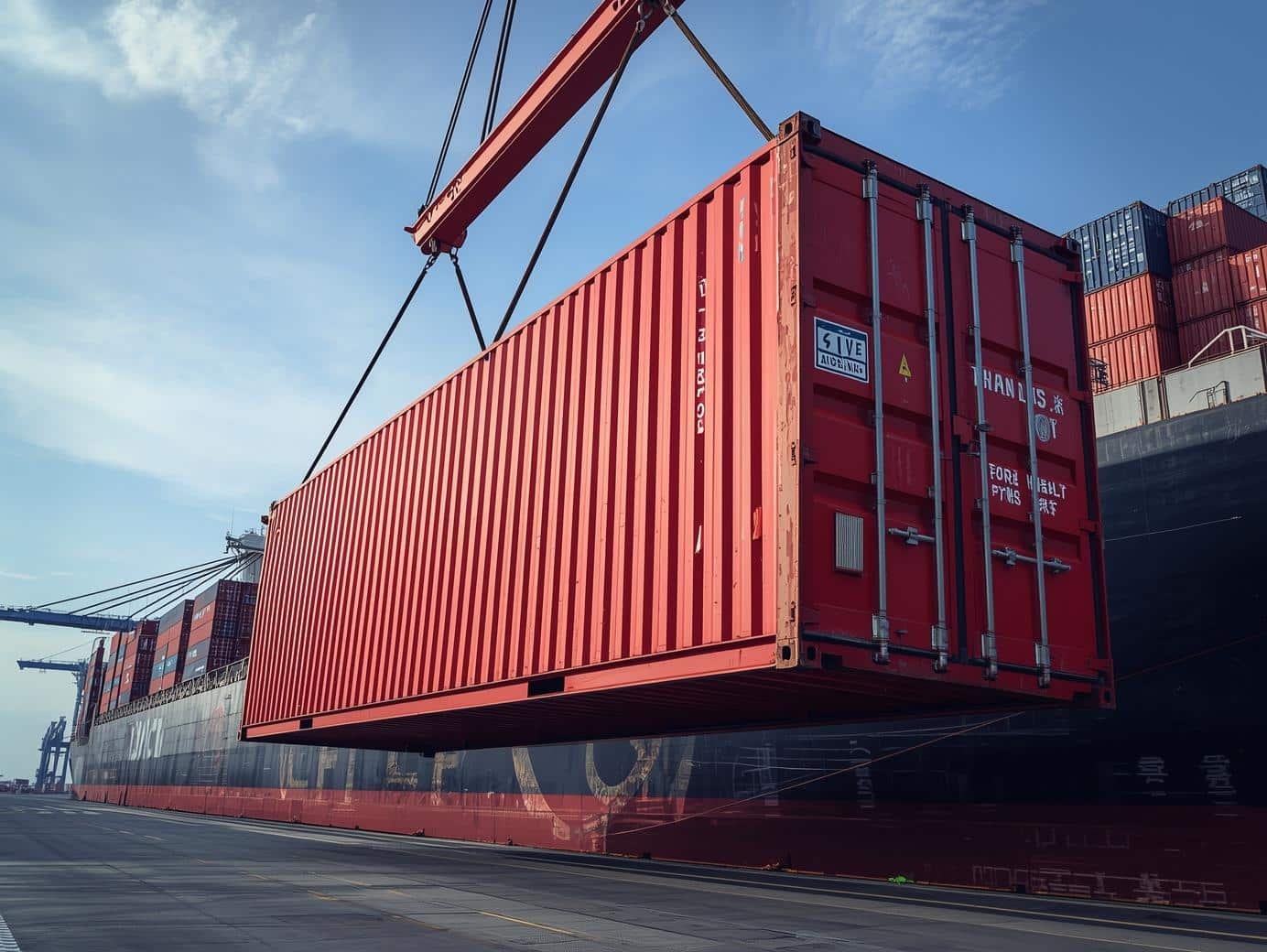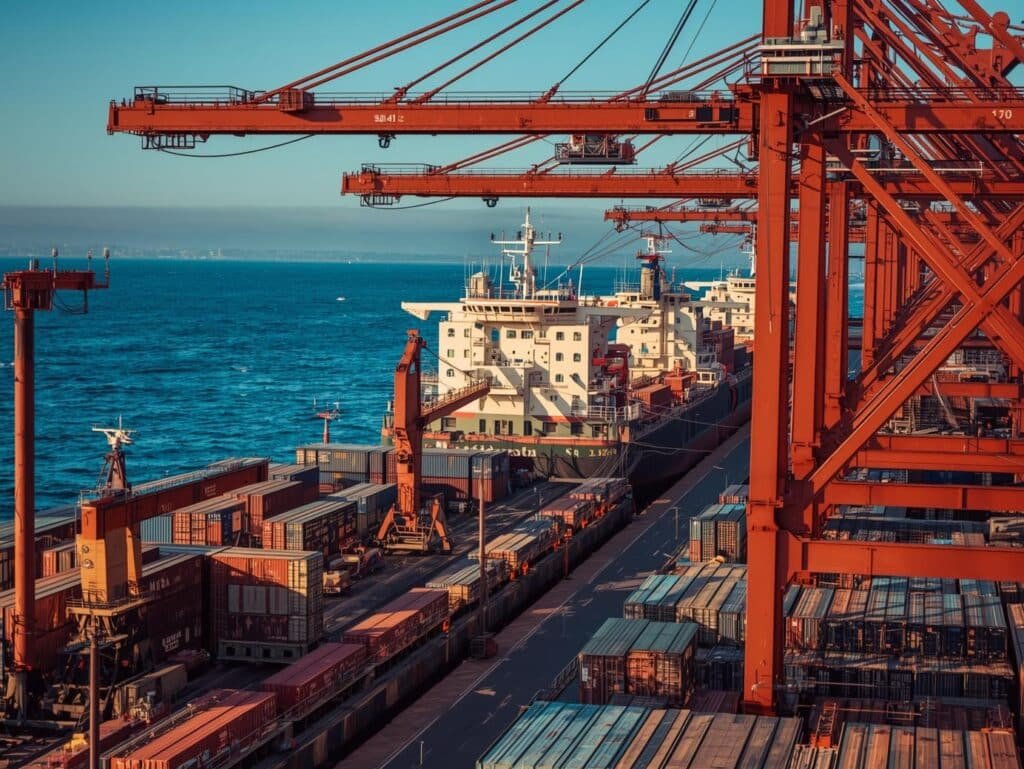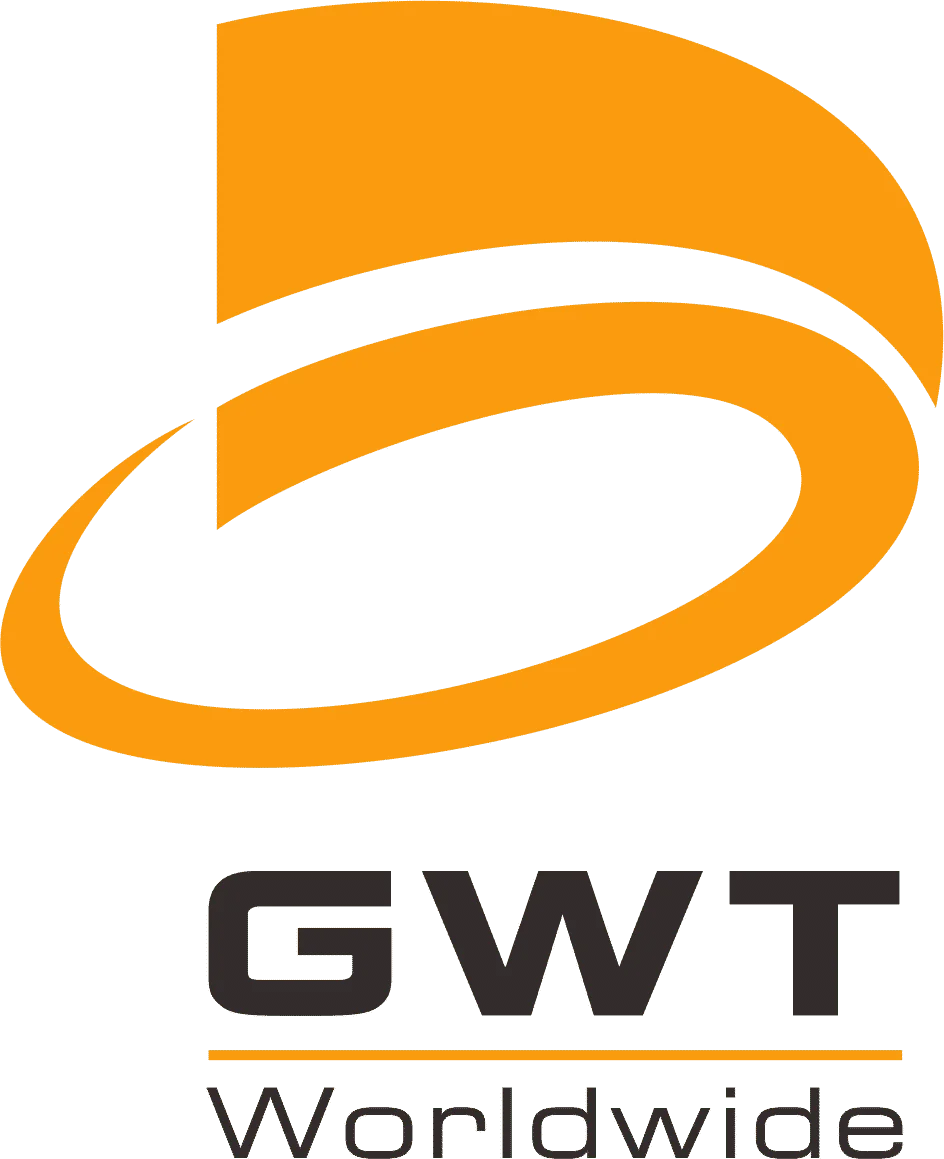Cheapest Way to Ship a 40ft Container from China to Japan
By Guanwutong / October 20, 2025
Optimizing the cost for shipping a 40ft container from China to Japan is a key focus for high-volume importers. While the short distance might suggest a straightforward process, securing the truly most cost-effective solution is complex.
It requires navigating fluctuating market rates, minimizing accessorial charges, and executing meticulous logistical planning. This critical trade route demands efficient management of the entire logistics service from china to japan.
For businesses, the primary concern extends beyond the base ocean freight rate. It requires a clear calculation of the Total Landed Cost (TLC), which incorporates terminal fees, documentation charges, and local drayage on both the Chinese and Japanese sides.
This guide will analyze the complete cost structure, detail key optimization strategies, and highlight the essential role of a specialized freight forwarder china to japan in maximizing savings across your China to Japan supply chain.

1. FCL Sea Freight: The Foundation of Cheapest China-Japan Shipping
When the cargo volume demands a 40 ft container, Sea Freight Full Container Load (FCL) is the non-negotiable, most economical transport method.
Air freight remains prohibitively expensive for this capacity, making FCL the primary focus for achieving the cheapest way on this short-sea route.
FCL vs. LCL: Maximizing Volume Economy for Logistics China
The inherent efficiency of FCL shipping is that the shipper pays a single flat rate for the entire container box.
This is crucial compared to LCL (Less than Container Load), where the per-cubic-meter cost is inflated by consolidation, stuffing, and deconsolidation fees at the port.
Utilizing FCL for your logistics china operation is the most effective strategy for managing the large volume of a 40 ft container.
Transit Time Data for Shipping from China to Japan
The shipping from china to japan route benefits from short transit times. The standard port-to-port duration from major Chinese hubs to key Japanese ports is typically 5 to 10 days.
This short duration minimizes the financial exposure to lengthy transit insurance and working capital lock-up.
| Route Example (40 ft FCL) | Typical Transit Time (Days) | Min - Max Days Range |
|---|---|---|
| Shanghai (CN) – Tokyo (JP) | 9 | 6-12 |
| Ningbo (CN) – Osaka (JP) | 8.5 | 7-10 |
| Qingdao (CN) – Kobe (JP) | 11 | 8-14 |
2. Strategic Port Selection and Drayage Optimization in Japan Logistics
The single greatest non-ocean variable impacting the cost of moving a 40 ft container is the drayage (local trucking) cost on both sides of the journey. Minimizing inland travel distances in both countries is paramount to finding the cheapest way.
Minimizing Origin Drayage for China Logistics Efficiency
Your choice of export port should be the one closest to your main supplier or consolidation point.
Utilizing warehousing in china services offered by your logistics services from china provider to consolidate shipments from multiple factories near a major port (e.g., Ningbo) can replace multiple expensive inland hauls with one short trip. This reduces the origin side of the china logistics bill.
Optimizing Domestic Japanese Logistics Costs
Japan’s highly efficient but expensive japanese logistics system makes domestic trucking a significant cost factor. When coordinating with your chosen freight forwarder china to japan, prioritize a final Port of Discharge (POD) that minimizes the road distance to your end facility or distribution center.
This deliberate planning minimizes the final-mile costs within the advanced logistics services in japan network. Specialized partners, like those affiliated with GWT Shipping, often have preferred domestic rates that can further reduce this expense.

3. Leveraging Freight Forwarder Networks for Cheapest China-Japan Logistics
A crucial difference between paying market rate and finding the cheapest way rests entirely with your freight forwarder china to japan.
These specialists, who understand the intricate workings of japanese logistics company operations and major carriers, act as your financial gatekeepers and crucial compliance advisors.
Gaining FCL Rate Advantage via Freight Forwarder China Expertise
Providers like GWT Shipping specialize in this route, securing high-volume contracts and slot guarantees with key ocean carriers.
This enables them to offer significantly more competitive FCL rates than an individual importer could achieve. They are key to ensuring both the lowest cost and high reliability for your China-Japan logistics.
Navigating Surcharges to Secure Low TLC (Total Landed Cost)
Ocean freight rates are complex, often loaded with surcharges (BAF, CAF, PSS). A proficient forwarder should provide forward guidance on:
- Peak Season Avoidance: Advising clients to ship slightly earlier or later than the highest-demand periods (e.g., late Q3 for holiday inventory) to avoid PSS and inflated spot rates.
- Negotiating DTHC: Destination Terminal Handling Charges (DTHC) in Japan can be high. A quality forwarder should negotiate these with their destination partners, providing a better global logistics corporation service and better TLC.
Product-Specific Customs Restrictions in Logistics of Japan
A crucial step is clarifying commodity-specific restrictions in Japan. Depending on the commodity (e.g., chemicals, food, electronics, or even papers), there might be specific customs restrictions/regulations in Japan. We strongly suggest you check with the buyer/receiver.
If they are unsure, they must consult a dedicated customs broker to clarify the necessary certifications and permits before shipment. Failure to do so will result in costly port delays and potential seizure in the logistics of japan framework.
For more information on Japan’s import regulations, see Japan’s foreign trade policy from CCPIT, and official customs guidance such as Procedures of Passenger Clearance et Goods with Prohibitions, Controls and Restrictions from Japan Customs.
Crucial Risk Management: Shipping Insurance
While seeking the cheapest way, never sacrifice shipping insurance. The risk of losing a 40 ft container’s worth of goods due to accidents or events is far too high. Shipping insurance is essential and typically costs a very small fraction of the total shipment value (often around $150 USD), mitigating the risk of total loss.
Case Study: GWT Shipping Ensures Delivery Reliability on the China-Japan Route
The expertise of a specialized freight forwarder china to japan is best demonstrated by reliable performance under pressure. This case illustrates how GWT Shipping delivers certainty in complex China to Japan supply chain operations.
A client required urgent delivery of 7 x 20GP containers of petrochemical resin, crucial for meeting a strict Letter of Credit (L/C) deadline. A major issue arose when the factory was unable to complete essential palletizing due to operational constraints.
Carrier Management: GWT utilized its strong partnership with carriers (e.g., SITC) to immediately secure the fastest available vessel and guarantee the necessary competitive rate and slot allocation.
Value-Added Logistics: Recognizing the urgency, GWT arranged for the cargo to be delivered to its Shekou warehouse, where GWT personnel worked immediately to complete the professional manual palletizing overnight, ensuring the cargo was ready for shipment by the next morning.
Process Efficiency: The team managed professional drayage, ensured meticulous document pre-auditing, and secured expedited customs clearance prior to the cargo cut-off. GWT also proactively expedited the Original Bill of Lading (B/L) issuance to shorten the L/C negotiation timeline.
Compliance Support: Assisted the client in obtaining the Certificate of Origin to secure tax benefits for the Japanese consignee.
The entire China-Japan logistics cycle, from the moment GWT received the cargo to its collection by the consignee in Tokyo, was completed in less than 7 days. This performance ensured the client met their L/C obligation and led to GWT Shipping being appointed as their exclusive logistics partner for all future weekly shipments.
4. Understanding Incoterms and Total Cost in the China-Japan Supply Chain
The negotiated delivery terms (Incoterms) impact which party pays for which charges and who manages the logistics at the point of handover.
Navigating Incoterms for International Logistics Service
Delivery terms (Incoterms) determine the division of costs and risk. When acting as both shipper and consignee:
- FOB (Free On Board): All origin (FOB) charges are paid by your agent in China. The ocean freight and destination charges are paid by you or your agent in Japan.
- CIF (Cost, Insurance, and Freight): Origin (FOB) charges plus the ocean freight are paid by your China agent, and the destination charges are paid by your Japanese agent.
The terms clarify financial responsibility between your china logistics company agent and your Japanese agent.
Further Reading: Basic overview of the Incoterms 2020 rules from DHL
Comprehensive Total Landed Cost (TLC) Analysis
To truly identify the cheapest way, you must calculate the Total Landed Cost (TLC), which includes all accessorial charges. Focusing solely on the base ocean rate is a common mistake that leads to unexpected expenses and budget overruns.
| Cost Component | Description | Strategy for Saving |
|---|---|---|
| Ocean Freight Rate | The base FCL cost (approx. $800 - $1,500 USD for a 40 ft FCL, based on industry average 2025 rates). | Book during off-peak season (e.g., Q1) and utilize forwarder contracts. |
| Surcharges (BAF, PSS) | Carrier fees (Bunker Adjustment Factor, Peak Season Surcharge). | Avoid booking during major peak seasons (e.g., late Q3/early Q4). |
| Origin Charges (THC, Documentation) | Fees at the loading port in China. | Consolidate shipments through one reliable logistics services from china provider. |
| Destination Charges (THC, CFS/DTHC) | Fees upon arrival at the japan logistic port. | Negotiate these DTHC charges through your forwarder before booking. |
| Inland Drayage (China & Japan) | Trucking costs from factory to port and port to warehouse. | Select origin/destination ports close to your facilities. |
5. Advanced Strategies for Cost-Saving Logistics from China
For companies seeking comprehensive supply chain management, considering the full scope of logistics services in japan is vital.
Strategic Transit Storage Options and Professional Compliance
For goods that may require temporary storage outside of mainland China or need value-added services before entering the Japanese market, leveraging third-party transit hubs can be a strategy. Hong Kong, for instance, has a good reputation for duty-free storage and re-export.
However, utilizing such transit options requires extremely rigorous handling of all paperwork to maintain the duty-free status upon re-export. To mitigate this significant risk, we strongly recommend engaging a professional and experienced customs brokerage firm.
GWT Shipping offers highly specialized and experienced customs clearance services and personnel, ensuring your complex transit and re-export declarations are handled with precision, protecting your inventory and cost structure.
Japan Last-Mile Advantage: Unmatched Domestic Efficiency
Beyond ocean freight, efficiency in the destination country is key. Many importers struggle with Japanese domestic logistics, where securing suitable trucking services can lead to unnecessary waiting periods and increased costs.
GWT Shipping’s Advantage: We have established exceptional, deep-rooted relationships with the most reliable local japanese logistics company partners.
This strong partnership ensures that our clients secure the necessary professional trucking and final-mile delivery in just 1–2 days after customs clearance.
This high level of efficiency in the final stage of logistics japan effectively prevents situations where cargo is delayed due to vehicle scarcity, thereby minimizing port storage costs and ensuring the highest possible efficiency for valuable cargo.
Expanding the Logistics from China Network
- Warehousing in China: Utilizing a forwarder who offers warehousing in china allows you to consolidate goods from multiple suppliers before shipping the 40 ft container, maximizing FCL efficiency.
- Warehousing in Japan: A partner with strong warehousing in japan connections, possibly through networks like pacific logistics japan, can facilitate immediate distribution upon arrival, minimizing expensive port storage (demurrage).
Furthermore, established forwarders often handle complex triangular routes, such as shipping service from japan to other Asian nations, or even freight forwarder japan to usa routes, showing their capacity for international logistics service within the logistics of japan environment.
Final Steps: Securing Your Cheapest Quote from a China Logistics Company
To get the most competitive rate for your 40 ft container:
- Gather Detailed Information: Provide your chosen forwarder with accurate cargo weight, dimensions, commodity type (HS Code), and preferred Chinese and Japanese ports.
- Request an All-in Quote: Insist on a quote that includes the ocean rate plus origin and destination charges (THC, documentation, etc.).
- Contact an Expert: For dedicated, cost-effective logistics service from china to japan, research providers like e-logistics.us to start your quoting process. If you need immediate assistance, search for the e-logistics phone number or similar contact details for a specialist freight forwarder japan.
Conclusion
Securing the cheapest way to ship a 40 ft container from China to Japan ultimately relies on two factors: optimizing the FCL volume and minimizing the Total Landed Cost (TLC).
The short-sea route’s efficiency makes FCL the obvious choice, but true savings are found by strategically selecting ports to reduce drayage and, critically, by partnering with a specialized freight forwarder.
Companies like GWT Shipping demonstrate that expertise in carrier contract negotiation, specialized logistics services, and reliable local trucking in Japan are essential to achieving both the lowest cost and the highest operational reliability.
By focusing on the TLC rather than just the ocean rate, importers can transform their China to Japan supply chain from a source of unexpected costs into a predictable, highly efficient competitive advantage.
FAQ
FCL (Full Container Load) is the cheapest per unit because you are paying a single flat fee for the entire container box. Unlike LCL (Less than Container Load), FCL avoids high consolidation, handling, and deconsolidation fees that significantly inflate the cost-per-cubic-meter, maximizing the efficiency of your logistics from china.
A specialized freight forwarder china to japan (like GWT Shipping) leverages massive volume to secure discounted contractual rates that an individual shipper cannot access. They also manage all complex port documentation, local fees, and coordinate the necessary japanese logistics company partners, offering a seamless and cost-effective international logistics service.
Customs regulations in Japan depend heavily on the specific commodity. For any potentially restricted goods, you must check with the receiver/buyer to clarify the necessary documents and restrictions. If they are unsure, the best course of action is to hire a professional customs broker to seek clarification and ensure compliance before the cargo ships. For complex items, companies like GWT Shipping offer expert brokerage services to guarantee smooth clearance.
While seeking the cheapest rate, shipping insurance is a non-negotiable risk mitigation tool. The cost is minimal (often around $150 USD for an FCL shipment, based on industry averages), but it protects you from the catastrophic risk of total loss if the 40 ft container is lost, damaged, or severely delayed due to unforeseen events.
These Incoterms determine where costs are paid. Under FOB (Free On Board), the shipper’s agent pays origin charges, and the receiver’s agent pays ocean freight and destination charges. Under CIF (Cost, Insurance, and Freight), the shipper’s agent pays origin charges plus the ocean freight and insurance. The terms clarify financial responsibility between your china logistics company agent and your Japanese agent.
If you source products from multiple suppliers, using a centralized warehousing in china solution allows you to consolidate all goods into one optimal, fully loaded 40 ft container. This single FCL move is significantly cheaper on a per-unit basis than shipping multiple fragmented LCL shipments, maximizing your FCL investment.
The biggest risk is failure to comply with the stringent duty-free re-export documentation, which can lead to major fines or customs issues upon arrival in Japan. This risk is managed by engaging professional customs brokers, such as the experienced team at GWT Shipping, who specialize in handling complex, multi-jurisdictional paperwork to maintain the goods’ duty-free status during the transit phase.
Ready to streamline your China-Japan supply chain with trusted partners?
